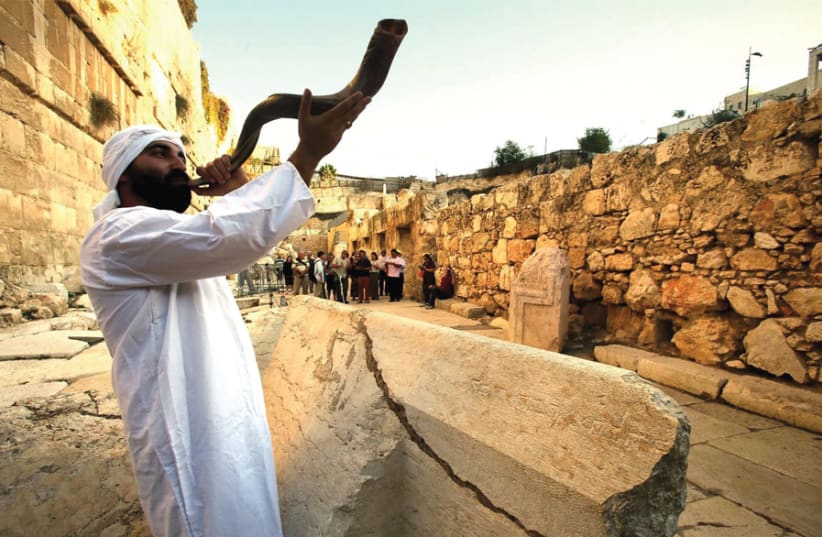Major Israeli-based tour operators tell The Media Line they do not expect the country’s skies to open for international visitors in time for some of the most important religious dates on the Hebrew calendar, which start in just a couple of weeks.
“I don’t see any kind of traffic coming to Israel. Not during Rosh Hashana. Definitely not Yom Kippur. And I don’t think that Sukkot is even an option,” Etay Furman, business- development manager at Haifa-based G&S Travel, told The Media Line.
“Maybe – and it’s a big maybe – I hope that by Passover [in the spring] we’ll see some movement, some traffic,” he said. “But for the near term, I don’t see any.”
Rosh Hashana, the Jewish New Year, starts on Friday, September 18, followed by Yom Kippur, the Day of Atonement, on September 27, and Sukkot, the Feast of Tabernacles, on October 2.
A “traffic light” plan by Israel’s coronavirus czar, Prof. Ronni Gamzu, which takes effect on September 6, could prove a hamper on the holidays for local residents as well. It is an effort to lower the daily transmission rates and shows that Israel has a long way to go before it opens itself up to foreign visitors.
The number of coronavirus cases confirmed on Tuesday was 2,183, the same number as the day before, continuing a trend of high daily infections, according to the Health Ministry.
Israel’s so-called Coronavirus Cabinet on Sunday added nine more states to the “green” list of countries with low infection rates from which returning Israelis can avoid a 14-day quarantine upon arriving home. Foreign nationals are still banned, with some exceptions, including thousands of yeshiva and other students who are supposed to start the new academic year.
As if to emphasize how long the road to recovery will be for Israel’s tourism industry, a new report from the hospitality consulting firm HVS indicates that the country’s hotel sector will not return to 2019 peak performance levels (revenue per available room, or RevPAR) until 2024.
That is certainly not good news for Benny Scholder, director of North America sales for Tel Aviv-based Kenes Tours.
“We are one of Israel’s leading tourism companies, but our entire office of nearly 40 employees is on furlough at the moment – and those of us who are doing work are doing administrative work in preparation for when tourism returns,” he told The Media Line.
Furman and Scholder both say they hope that foreign visitors will again be welcome by next summer.
“I’m talking with my colleagues all the time. Different companies as well. At the end of the day, we are a small industry here in Israel and, for most us, we have good relationships,” Furman said.
“All of us talk about pretty much the same thing,” he stated. “We hope that by next summer, we will start to see any kind of traffic to Israel.”
Meanwhile, municipalities across the country are preparing for the High Holy Days with the looming threat of a lockdown unless there is a drastic drop in daily infection rates.
Fleur Hassan-Nahoum, deputy mayor of Jerusalem for foreign relations and tourism, says the city just completed a successful summer for domestic tourists and is ready to welcome visitors for the holidays.
“Even if Gamzu’s red light [plan takes effect], Jerusalem is not one homogeneous city. It’s a city of neighborhoods, and if there are some problematic neighborhoods, they will be the ones that will be closed down, and not the entire city,” Hassan-Nahoum told The Media Line.
The country’s most populous city, Jerusalem has the highest number of coronavirus cases of any locality in Israel, with 19,170, according to the latest Health Ministry data. It also has the most active patients, at 2,730, and has seen the most new patients in the past seven days, at 1,322.
Barring a nationwide shutdown, Hassan-Nahoum notes that the pandemic will still have a major impact on the holidays. For example, the municipality has arranged for prayer services to take place in schoolyards to meet social-distancing regulations.
Yet the situation is bringing out the good side in people.
“We are working with a group of volunteers who want to blow the shofar on every street corner so that people who can’t go to [synagogue] are able to hear the shofar,” Hassan-Nahoum said, referring to the ram’s horn traditionally sounded during the season.
“I think that shows the beauty of the solidarity of our city and our people,” she said.
Read more articles from The Media Line.
